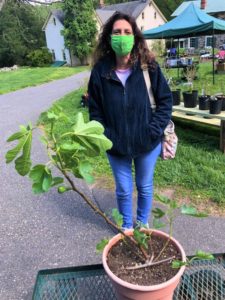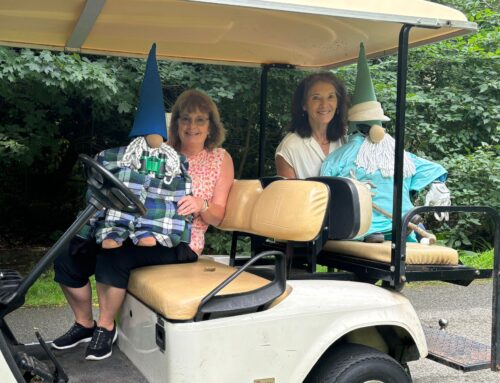Henriette Troiano, born Enrica LaVerghetta and called Nan by her friends and family, was born in Italy in 1918.
She was one of three children of the LaVerghetta family, who lived on a farm in Vasto, a little city on the Adriatic coast in the Southern Abruzzo region.
She had an older brother called Frank and a younger sister named Lena. They grew fruits and vegetables there, among them white figs (Ficus carica). These figs, also called Adriatic figs, grow pale green fruit that is sometimes bleached nearly white by the Mediterranean sun. They are said to give the sweetest figs, almost like jelly. You can pick them right from the tree and eat them, still warm from the sun.
These figs were part of the fabric of life on the LaVerghetta family farm, where the fruits were a staple. Nan’s father, Dominic, also traded them for fish from local fishermen, who would travel through their farm to bring fish to market.
A Difficult Choice
Life was not easy in Italy and Dominic made the difficult decision to immigrate to America. He went ahead of his family, staying with relatives who had already made the journey, until he had established himself enough to sponsor his wife, Anna, and their children to join him. Life must have been challenging during those years for the LaVerghetta family. Dominic made yearly visits back to the farm, but it took time and hard work to establish a life in America, and most of his time was spent thousands of miles from his wife and children. At last, in 1926, he was able to sponsor them to make the journey across the ocean to join him in Philadelphia.
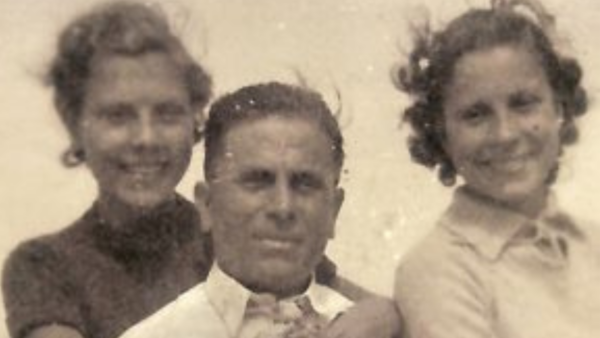
Lena, Dominic, and Nan.
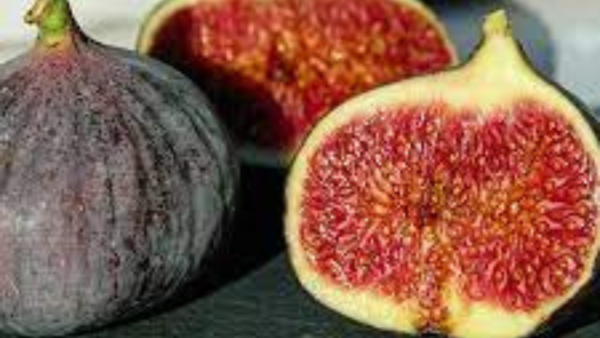
A Transatlantic Journey
Anna packed up her family, and before they left, they picked up a bag of figs. Fresh figs are hard to come by outside of their native range. They are delicate and bruise easily unless dried, so the family wanted this last treat from the fig trees that grew on their farm.
When they reached the boat, however, they learned that fresh fruits were not allowed on board. Rather than waste the figs, Frank sat down on the dock and ate every single one. I imagine they tasted as delicious as always, but perhaps more bittersweet. At the time when her family immigrated in 1926, Nan was only eight years old and her sister Lena, even younger. It must have taken great courage to leave the only home they had ever known to cross an ocean to an unknown country.
A Figgy Secret
But Anna had a secret. Before they left the farm, she took a cutting from the beloved fig tree and sewed it into the hem of her coat. She knew she had to keep it hidden, since plants, like fruits and vegetables, were not allowed on board the ship. It was worth the risk though; to bring the sweetest figs with them to America. So, concealed there in her hem, the fig tree left Italy with the LaVerghetta family.
Once on board the boat, Anna had to keep the fig alive. This would be a challenging proposition in the best of times — even more so with a cutting that needed to be kept hidden – and young children who needed care and attention. The family kept the fig cutting in a glass of water in their cabin. There was a window for light, and they kept the fig alive through the journey across the sea. Once they reached New York, Anna sewed the fig back into the hem of her coat and disembarked with her family.
Nan recalls the trip through Ellis Island. The rules were strict. You had to be in perfect health to come to America. Nan remembers officials examining her and her family, even checking her scalp for lice. But they didn’t check her mother’s coat hem, and the fig passed safely through Ellis Island.
From New York, Nan and her family traveled to Philadelphia where they planted the fig in a pot and kept it in their home. In the next few years, it lived and grew, and when they bought a house in Wildwood, New Jersey, they planted it on a sunny slope where it would be sheltered through the winter.
It needed the extra warmth. Figs aren’t reliably cold-hardy here in the Mid-Atlantic. Our wild temperature changes, which can soar to nearly 100 degrees Fahrenheit in the summer and plummet to the teens in winter, are very different from the temperate Mediterranean. So Nan’s family worked hard to care for their beloved fig, wrapping it in burlap, tarps and plastic in the winter so that it would be sheltered from the wind. In the summer, the family would collect manure from the farms in the West Chester area to spread around the tree. Once, Nan tells us, they collected so much for the garden in Wildwood that someone called the police because of the resulting swarm of flies!
The Giving Tree
The little cutting from Vasto, Italy became a tree. Then it became even more trees, as Nan’s family took cuttings to give to children and grandchildren. For example, when Nan’s grandson and his wife Leah purchased their first home, Nan gifted them a cutting which grew so large that their children, Nan’s great-grandchildren, would climb it to reach the figs at the top. They shared those fruits with their neighbors and teachers; anyone who had never tasted a fresh fig. It was a treat that crossed three generations and an ocean — from a bag of figs eaten on a dock in Italy, to a neighborhood outside of Philadelphia nearly a century later.
The tree grows elsewhere too; in New Jersey, West Chester, Havertown, Paoli and Philadelphia. One tree, with roots throughout the Philadelphia area. When you take a cutting, an exact copy grows the same genes in a separate plant. The conditions on site are different, more or less sun, different soil, but it is a genetic copy of the fig tree that grew on their family farm in Vasto.
In Leah’s words, “This tree was a legacy that is still passed on from generation to generation, and it will continue with my children.”
When she sold the home where she raised her children, it was to a woman who asked if the tree growing in the backyard was really a fig. They made a lifetime agreement upon the sale of the property that if that fig ever declined, the new owner could reach out to Leah for another cutting. When Leah and her husband purchased their new home, Nan had another cutting ready for the front yard.
A Family Legacy
To care for a tree this way is a labor of love.
As Nan says, “No one knew how to prune a tree like my father did.”
To take the time to make a cutting, sew it in a coat hem, keep it hidden across an ocean, and see it planted in a new world speaks to a relationship that has deep, strong roots. Each time the family spread manure around the fig tree, wrapped it against the cold winter wind, took a cutting to commemorate a new home or collected figs, they were building a legacy.
The legacy of plants, place and people — it stretches back generations, and another link is built every time a cutting is taken or a seed is saved and shared. In the plants we keep growing around us we can see our community; our ancestors. In the gardens we grow, if we are lucky, we can see family.
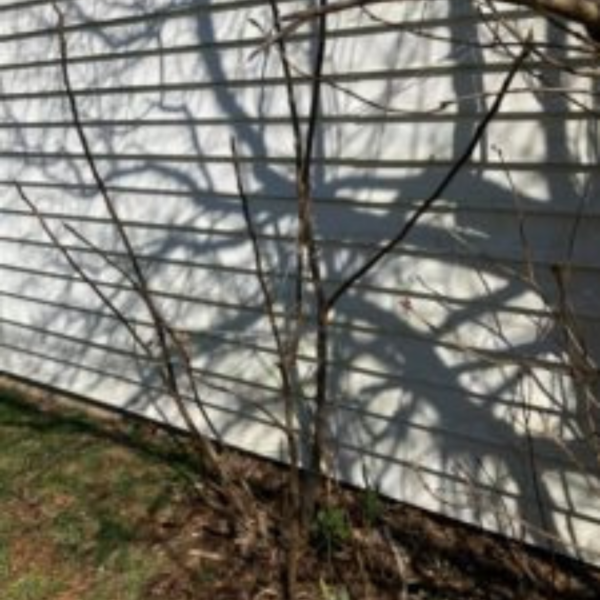
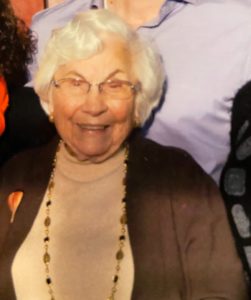
Nan on her 99th birthday.
Thanks to the incredible generosity of the Troiano family, and the care and attention of Anne Raposelli, Tyler Volunteer, there is one other place where you will be able to see a cutting from this fig tree growing – in Lucille’s Garden! On April 30, 2021 Anne donated a cutting of this wonderful tree, and the legacy that grew along with it, to Tyler. We are so grateful and touched that they have placed a piece of this special plant in our care. You can visit this fig in person next time you visit Tyler down in Lucille’s Garden. We’re so pleased to make it a part of our family.
